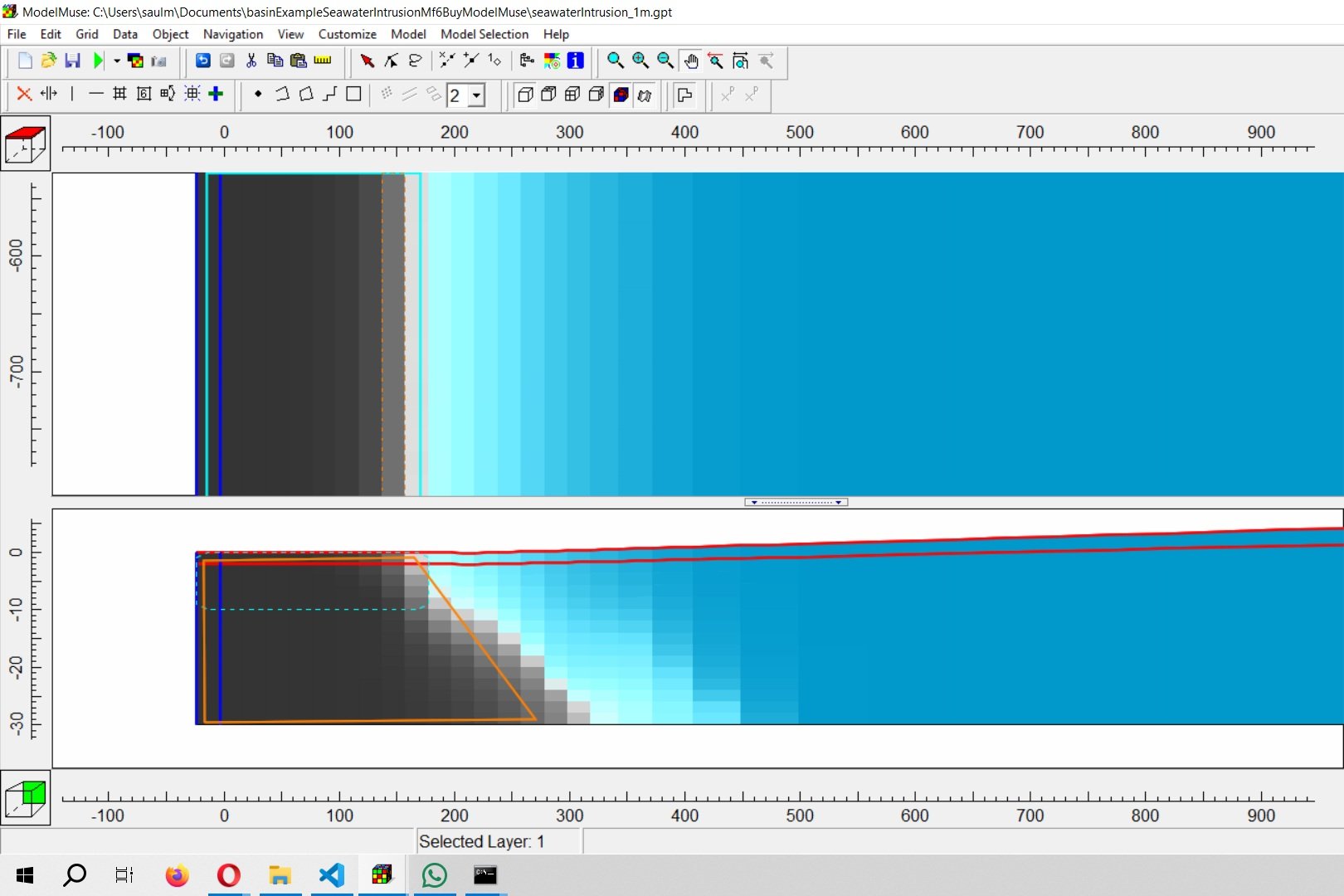Online Course: Contaminant Transport Modelling using MODFLOW and MT3DMS
/The simulation of solute transport in groundwater flow systems has evolved rapidly in recent years, driven by the increased interest in knowledge of aquifer pollution. The design of remediation systems for groundwater contamination requires a broad understanding of how various processes –advection, dispersion and chemical reactions– interact with the movement and fate of contaminants. The MT3DMS package, implemented by MODFLOW, provides a tool for synthesizing these processes, evaluating their interactions and testing the effectiveness of groundwater remediation measures.
Hatarilabs offers the virtual course of Contaminant Transport Modelling using MODFLOW and MT3DMS for students and professionals from any country. Now you can be trained in contaminant transport modelling using MODFLOW and Model Muse anywhere without any pre-set schedule. To access the available material and receive support, you just have to make a payment. The course includes certification.
Objectives
The six-session course provides the participant with essential knowledge of the basic principles governing the transport of contaminants. At the end of the course the participant will be able to:
Understand the processes of advection and dispersion transport, such as the chemistry that influences them.
Develop MODFLOW models that represent the contaminant transport conditions in groundwater regimes.
Perform visual post-processing to the transient flow of the contaminant plume.
Course content
The development of theory and practical applications in the use of the software for this course is shown below grouped by session:
Session 1
Theoretical Part
Components of the transport of solutes in the groundwater environment: porosity, sink and sources, nonpoint and point sources of water pollution.
Components of the software.
Equations governing the flow process: Darcy's Law and groundwater flow.
Construction of MODFLOW models.
Boundary conditions and initial conditions for the construction of a transport model.
Five keys to successful models.
Practical part
One-dimensional transport in a uniform flow field: evaluation of advection, dispersion, sorption and kinetic reactions processes.
Session 2
Theoretical Part
Overview of water quality in nature and its development across the aquifer.
Geochemical interpretation of groundwater: Collins diagrams, Piper diagrams, Stiff diagrams.
Groundwater pollution: Causes, characteristics of pollutants, pollution routes, preventive and corrective measures.
General overview of groundwater quality standards, examples.
Software and transport modelling.
MT3DMS environment: MT3DMS packages
Practical part
One-dimensional transport in conditions of non-linear sorption (Freundlich) and non-equilibrium (First order kinetic).
Session 3
Theoretical Part
Fundamentals of contaminant transport: advection, dispersion processes.
Mathematical solution techniques for solute transport: Available solvers and their characteristics
Numerical problems in contaminant transport models.
Practical part
Two-dimensional transport in a uniform flow field: solution for the 2D transport of a solute injected continuously from a point source in a steady state flow field.
Two-dimensional transport in a diagonal flow field: solution for the 2D transport of a solute injected continuously from a point source in a steady state flow field at certain angle.
Session 4
Theoretical part
Chemical equilibrium.
Adsorption equilibrium and isotherms.
Contaminant transport modeling coefficients and parameters.
Practical part
Two-dimensional transport in a radial flow field: steady state solution for a contaminant injected from a well at a constant rate.
Two-dimensional transport in a radial flow field during injection and pumping cycles of a well in a confined aquifer.
Session 5
Theoretical part
Chemical reactions in contaminant transport: classification.
Surface reactions: Sorption/desorption
Linear isotherms.
Non-linear isotherms: Freundlich, Langmuir.
Classical reactions: precipitation, dissolution, degradation.
Reaction equation: chemical, kinetics, reactions in dual domain systems.
Practical part
Three-dimensional transport in a uniform flow field: 3D contaminant injection from a well.
Two-dimensional vertical transport in a heterogeneous aquifer: flow and transport of solutes in a heterogeneous cross-section in a highly irregular flow field.
Session 6
Theoretical part
Groundwater remediation: remediation steps, methods.
Containment technologies.
Treatment methods.
Practical part
Example of two-dimensional flow application: contaminated site from a point source upstream and a pumping well is being used as a plume retention measure.
Case study in a three-dimensional field: evaluation of a proposed remediation scheme
Trainer
Betsy Romero MSc.
Agriculture Engineer
Ms. Romero is an Agricultural Engineer (National Agrarian University - La Molina, Lima -Perú), currently pursuing a Master’s degree in Groundwater and Global Change - Impacts and Adaptation (IST Lisbon - Portugal, IHE Delft - The Netherlands, TU Dresden - Germany). Ms. Romero has experience in water resources in the fields of hydrogeology, hydrology, hydraulics, drinking water supply and wastewater treatment.
She has extensive knowledge in new technologies and management of various codes of groundwater and surface water models such as MODFLOW, HEC-HMS, HEC-RAS, among others. In addition, she has mastered tools for the management of geographic information focused on the study of water resources.
Language skills: Spanish, English and Portuguese.
Methodology
Here are some details of each methodology:
Manuals and files for the exercises will be delivered.
The course will be developed by videos on private web platform.
There is online support for questions regarding the exercises developed in the course.
Digital certificate available at the end of the course.
Video of the classes will be available for 2 months.
To receive the digital certificate you must submit the exercises after 1 month.
Cost and payment
The cost of the course is $ 250 dollars.
This online course will be given on out elearning platform: elearning.hatarilabs.com . You will need to create an account to payment by Paypal and automatically you will register for the course.
For any other information please write to: saulmontoya@hatarilabs.com























